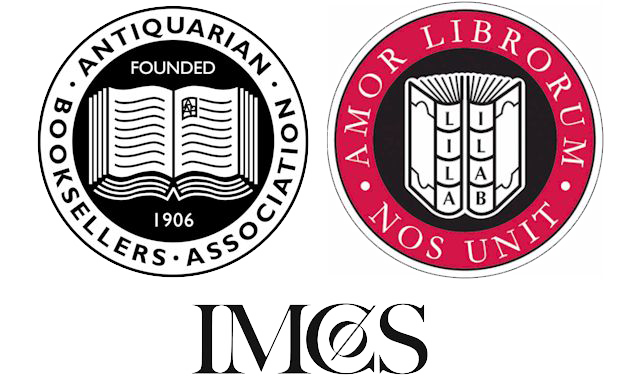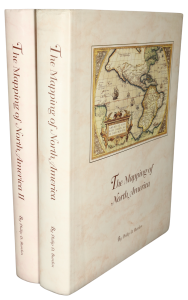Rare Maps and Prints
- World & Celestial
- North America
- West Indies, South & Central America
- British Isles
- British Isles
- English counties
- Large-scale
- Bedfordshire
- Berkshire
- Buckinghamshire
- Cambridgeshire
- Cheshire
- Cornwall
- Cumberland
- Derbyshire
- Devon
- Dorset
- Durham
- Essex
- Gloucestershire
- Hampshire
- Herefordshire
- Hertfordshire
- Huntingdonshire
- Islands
- Kent
- Lancashire
- Leicestershire
- Lincolnshire
- Middlesex
- Norfolk
- Northamptonshire
- Northumberland
- Nottinghamshire
- Oxfordshire
- Rutland
- Shropshire
- Somerset
- Staffordshire
- Suffolk
- Surrey
- Sussex
- Warwickshire
- Westmoreland
- Wiltshire
- Worcestershire
- Yorkshire
- Wales
- Scotland
- Ireland
- Western Europe
- Eastern Europe
- Middle East
- Africa
- Asia
- Australasia & Pacific
- Decorative Prints
- Title Pages
Mr. Philip D. Burden
P.O. Box 863,
Chalfont St. Giles, Bucks HP6 9HD,
UNITED KINGDOM
Tel: +44 (0) 1494 76 33 13
Email: enquiries@caburden.com
An EXCEEDINGLY RARE MAP by Robert Walton (1618-88) who was one of the more active London dealers in maps and prints although he is more known for the latter. Indeed we are UNABLE TO TRACE AN EXAMPLE EVER being on the market. His career began following the English Civil War. His maps are rarely issued in any formal book, where they might be preserved and as a consequence are very rare and desirable.
In 1643 at the outbreak of the English Civil War (1642-51) Thomas Jenner published a revised edition of the ‘Direction for the English Traviller’ whose plates he had acquired from his printer Matthew Simmons. This little work offered a small table of distances for each county accompanied by a small map. Jenner had timed his move perfectly. Demand for maps and tools to help the large numbers of people moving about the country at the time of the Civil War was on the increase. The market for the little atlas clearly proved so great that he was attracted to do more. He engaged the services of the noted engraver Wenceslaus Hollar to etch a reduction of Christopher Saxton’s great wall map of 1583. This would enable his customers to have a more detailed and yet still portable map of England and Wales. The map was issued in 6 main sheets and would become known as the Quartermasters Map.
The Civil Wars finished in 1651 with Charles II fleeing to France. With semblance of calm falling on the land Robert Walton saw that there might be a market for a traveller’s map that was not as large as the Quartermaster map offered by Jenner. In 1654 he first issued this reduced sized version. Unlike the earlier map this covered Scotland and Ireland as well, both disrupted by the conflict. It was also clearly aimed at the more common man with the oval description in the centre stating ‘A Guide for Travellers and the Plaine Mans Map for both this an all other Mapps are made plaine and Easy to the meanest Capacity by the Directions herein given the like never before 1654’. The map was issued in two sheets, Scotland being a smaller second sheet hear lacking.
Walton employed the services of the same engraver that Jenner had used, Wenceslaus Hollar (1607-77). He is described by Pennington in glowing terms: ‘Of all etchers, Hollar is certainly the most varied in subject, one of the most accomplished in technique, and with a style that is full of a charm, a humour, and a good nature that are evidently the character of the man himself’. He was born in Prague and made his way to England in the party of Lord Arundel arriving in London in late December 1636. For this map Walton instructed him to draw upon the arguably more up-to-date and respected maps of John Speed. Shortly after issue it was amended to be included in Thomas Porter’s ‘A New Booke of Mapps’ published in 1655 which Walton sold. Here it is bound as two separate sheets, the work contained a separate section entitled ‘Scotland’s Alphabetical Table’ further indication of the maps intention for the book and why it was issued in two separate plates clearly designed to be joined if so desired. Indeed the earliest known map-seller’s catalogue which is by Robert Walton offers the map ‘Or England, Wales, and Ireland by itselfe’, i.e. without Scotland. Shirley alludes to the fact that Porter may have been involved in the maps production also, however only the names of Walton and Hollar appear on the map.
The map includes England, Wales and Ireland and bears an inset plan of Dublin lower left. ‘A Catalogue of the Shires, Hundreds, Citties …’ appears upper right. A further panel to the right of the plan of Dublin addresses the reader as to how to measure the distance using the scale of miles nearby. A small panel upper left identifies keys – ‘I: stands for Ile’, ‘Fl: for Flood or River’ etc. A superb rare early map issued prior to the Great Fire of London. No example of the map could be traced on the market in living memory; the same is the case for Porter’s ‘A New Booke of Mapps’ for which none are recorded on the ABPC. Provenance: private English collection, sold 1991 to another private collection. Fordham (1924) Road Books p. 9; Pennington (1982) Hollar 649 st. ii; Shirley (1983) Walton 1.2; Tyacke (1978) p. 108 pl. 8 (illustrating Walton catalogue of 1655); Worms & Baynton-Williams (2011).
In 1643 at the outbreak of the English Civil War (1642-51) Thomas Jenner published a revised edition of the ‘Direction for the English Traviller’ whose plates he had acquired from his printer Matthew Simmons. This little work offered a small table of distances for each county accompanied by a small map. Jenner had timed his move perfectly. Demand for maps and tools to help the large numbers of people moving about the country at the time of the Civil War was on the increase. The market for the little atlas clearly proved so great that he was attracted to do more. He engaged the services of the noted engraver Wenceslaus Hollar to etch a reduction of Christopher Saxton’s great wall map of 1583. This would enable his customers to have a more detailed and yet still portable map of England and Wales. The map was issued in 6 main sheets and would become known as the Quartermasters Map.
The Civil Wars finished in 1651 with Charles II fleeing to France. With semblance of calm falling on the land Robert Walton saw that there might be a market for a traveller’s map that was not as large as the Quartermaster map offered by Jenner. In 1654 he first issued this reduced sized version. Unlike the earlier map this covered Scotland and Ireland as well, both disrupted by the conflict. It was also clearly aimed at the more common man with the oval description in the centre stating ‘A Guide for Travellers and the Plaine Mans Map for both this an all other Mapps are made plaine and Easy to the meanest Capacity by the Directions herein given the like never before 1654’. The map was issued in two sheets, Scotland being a smaller second sheet hear lacking.
Walton employed the services of the same engraver that Jenner had used, Wenceslaus Hollar (1607-77). He is described by Pennington in glowing terms: ‘Of all etchers, Hollar is certainly the most varied in subject, one of the most accomplished in technique, and with a style that is full of a charm, a humour, and a good nature that are evidently the character of the man himself’. He was born in Prague and made his way to England in the party of Lord Arundel arriving in London in late December 1636. For this map Walton instructed him to draw upon the arguably more up-to-date and respected maps of John Speed. Shortly after issue it was amended to be included in Thomas Porter’s ‘A New Booke of Mapps’ published in 1655 which Walton sold. Here it is bound as two separate sheets, the work contained a separate section entitled ‘Scotland’s Alphabetical Table’ further indication of the maps intention for the book and why it was issued in two separate plates clearly designed to be joined if so desired. Indeed the earliest known map-seller’s catalogue which is by Robert Walton offers the map ‘Or England, Wales, and Ireland by itselfe’, i.e. without Scotland. Shirley alludes to the fact that Porter may have been involved in the maps production also, however only the names of Walton and Hollar appear on the map.
The map includes England, Wales and Ireland and bears an inset plan of Dublin lower left. ‘A Catalogue of the Shires, Hundreds, Citties …’ appears upper right. A further panel to the right of the plan of Dublin addresses the reader as to how to measure the distance using the scale of miles nearby. A small panel upper left identifies keys – ‘I: stands for Ile’, ‘Fl: for Flood or River’ etc. A superb rare early map issued prior to the Great Fire of London. No example of the map could be traced on the market in living memory; the same is the case for Porter’s ‘A New Booke of Mapps’ for which none are recorded on the ABPC. Provenance: private English collection, sold 1991 to another private collection. Fordham (1924) Road Books p. 9; Pennington (1982) Hollar 649 st. ii; Shirley (1983) Walton 1.2; Tyacke (1978) p. 108 pl. 8 (illustrating Walton catalogue of 1655); Worms & Baynton-Williams (2011).
WALTON, Robert
(A Curious New Plaine and Exact Mapp of England, Ireland, Scotland, and Wales ...)
Printed for and by Ro: Walton at the Rose and Crowne at the West end of S. Paules, London, 1654-[55]
440 x 530 mm., early outline colour, with several folds as issued, a couple of minor repairs to splits as might be expected, small section of the border on the left side replaced in facsimile with minimal work to the map itself, lacking the second sheet of Scotland although as issued by the publisher, generally in good condition.
Stock number: 8055
SOLD






